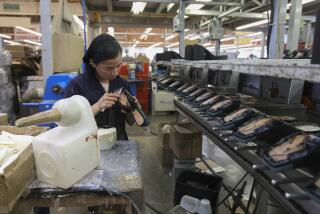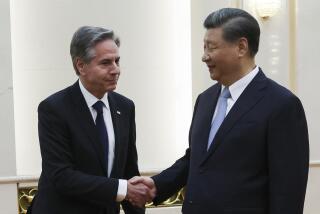China dumps grain policy to boost meat production
For decades, China’s rulers deemed grain production a linchpin to its national security. The policy of self-sufficiency was a legacy of its planned economy from the days of Mao when China was increasingly isolated from the outside world.
But China’s communist founders couldn’t have predicted the nation’s dizzying rise in meat consumption, which has grown nearly ten-fold to 71 million metric tons since 1975.
That’s why China has been increasingly importing grains such as soybeans and corn from the U.S. and Brazil to boost its livestock population. Grain self-sufficiency was becoming like communist dogma in China: more a theory than a practice.
Then last week, Beijing called it quits by announcing it was scaling back its annual grain production targets to put a greater emphasis on quality rather than quantity.
The decision frees up precious little arable land for more high value crops such as fruit and vegetables. And it could help ease the pressure on food inflation, an issue linked to social stability and driven largely by the price of pork.
The shift in grain policy was the clearest signal that policymakers had decided meat production was paramount, a pivot that will ripple across the globe and probably intensify China’s quest for foreign sources of meat, grain and dairy.
“The decision last week signals a clear intent by the Chinese government to facilitate more and cheaper imports of corn, wheat and other grains for its meat industry,” said Shefali Sharma, director of agricultural commodities at the Washington-based Institute of Agriculture and Trade Policy (IATP). “China has become a critical actor in the global industrial meat complex, a move that carries significant weight for global grain and meat production.”
The nonprofit group, which advocates sustainable food policy, said China’s struggle with food safety may be exacerbated by its attempt to expand its meat industry. The effort could expose China to some of the pitfalls industrialized farming in the U.S. has faced, namely large-scale contamination, antibiotic resistance and environmental damage, it said.
The IATP examines the many challenges of feeding China in a research report released Tuesday titled “Global Meat Complex: The China Series.” The study looks at the country’s rising dairy demand, its massive pork industry and attempts to modernize its poultry production.
One reason to pay attention: China’s meat consumption is far from peaking. Though Chinese per capita meat consumption has doubled since 1992 to 52.5 kilograms, the average American still eats twice as much meat each year. That suggests there’s still much more room to grow in China, where incomes are rising and appetites for ever richer diets steadily growing.
“Understanding how Chinese companies are ‘going out’ to develop their supply chains, and how major U.S. and other international livestock and dairy companies are ‘going in’ to China, better prepares us to address the global nature of this industrial complex and its impacts both domestically and globally,” Sharma said.
More to Read
Inside the business of entertainment
The Wide Shot brings you news, analysis and insights on everything from streaming wars to production — and what it all means for the future.
You may occasionally receive promotional content from the Los Angeles Times.











